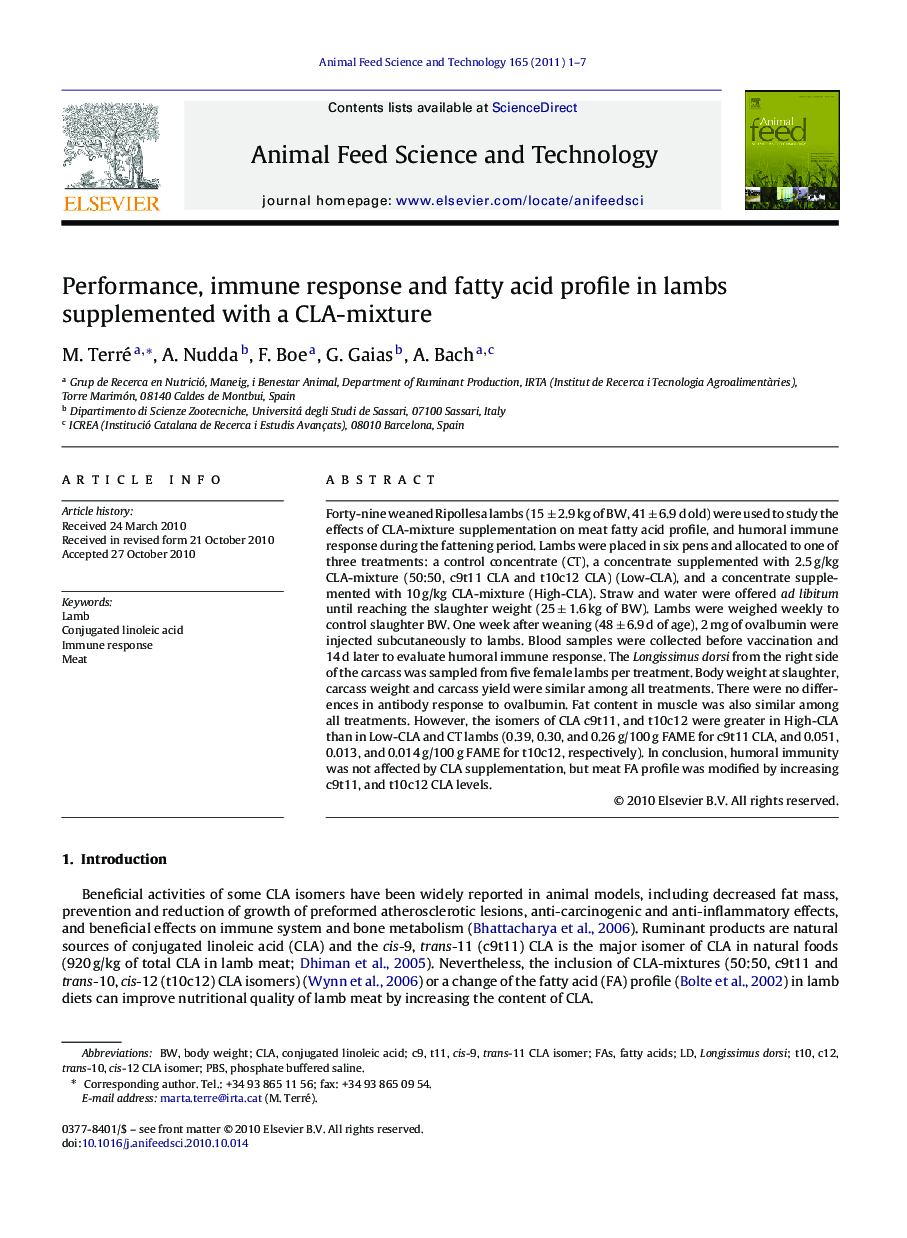| Article ID | Journal | Published Year | Pages | File Type |
|---|---|---|---|---|
| 8492700 | Animal Feed Science and Technology | 2011 | 7 Pages |
Abstract
Forty-nine weaned Ripollesa lambs (15 ± 2.9 kg of BW, 41 ± 6.9 d old) were used to study the effects of CLA-mixture supplementation on meat fatty acid profile, and humoral immune response during the fattening period. Lambs were placed in six pens and allocated to one of three treatments: a control concentrate (CT), a concentrate supplemented with 2.5 g/kg CLA-mixture (50:50, c9t11 CLA and t10c12 CLA) (Low-CLA), and a concentrate supplemented with 10 g/kg CLA-mixture (High-CLA). Straw and water were offered ad libitum until reaching the slaughter weight (25 ± 1.6 kg of BW). Lambs were weighed weekly to control slaughter BW. One week after weaning (48 ± 6.9 d of age), 2 mg of ovalbumin were injected subcutaneously to lambs. Blood samples were collected before vaccination and 14 d later to evaluate humoral immune response. The Longissimus dorsi from the right side of the carcass was sampled from five female lambs per treatment. Body weight at slaughter, carcass weight and carcass yield were similar among all treatments. There were no differences in antibody response to ovalbumin. Fat content in muscle was also similar among all treatments. However, the isomers of CLA c9t11, and t10c12 were greater in High-CLA than in Low-CLA and CT lambs (0.39, 0.30, and 0.26 g/100 g FAME for c9t11 CLA, and 0.051, 0.013, and 0.014 g/100 g FAME for t10c12, respectively). In conclusion, humoral immunity was not affected by CLA supplementation, but meat FA profile was modified by increasing c9t11, and t10c12 CLA levels.
Keywords
Related Topics
Life Sciences
Agricultural and Biological Sciences
Animal Science and Zoology
Authors
M. Terré, A. Nudda, F. Boe, G. Gaias, A. Bach,
